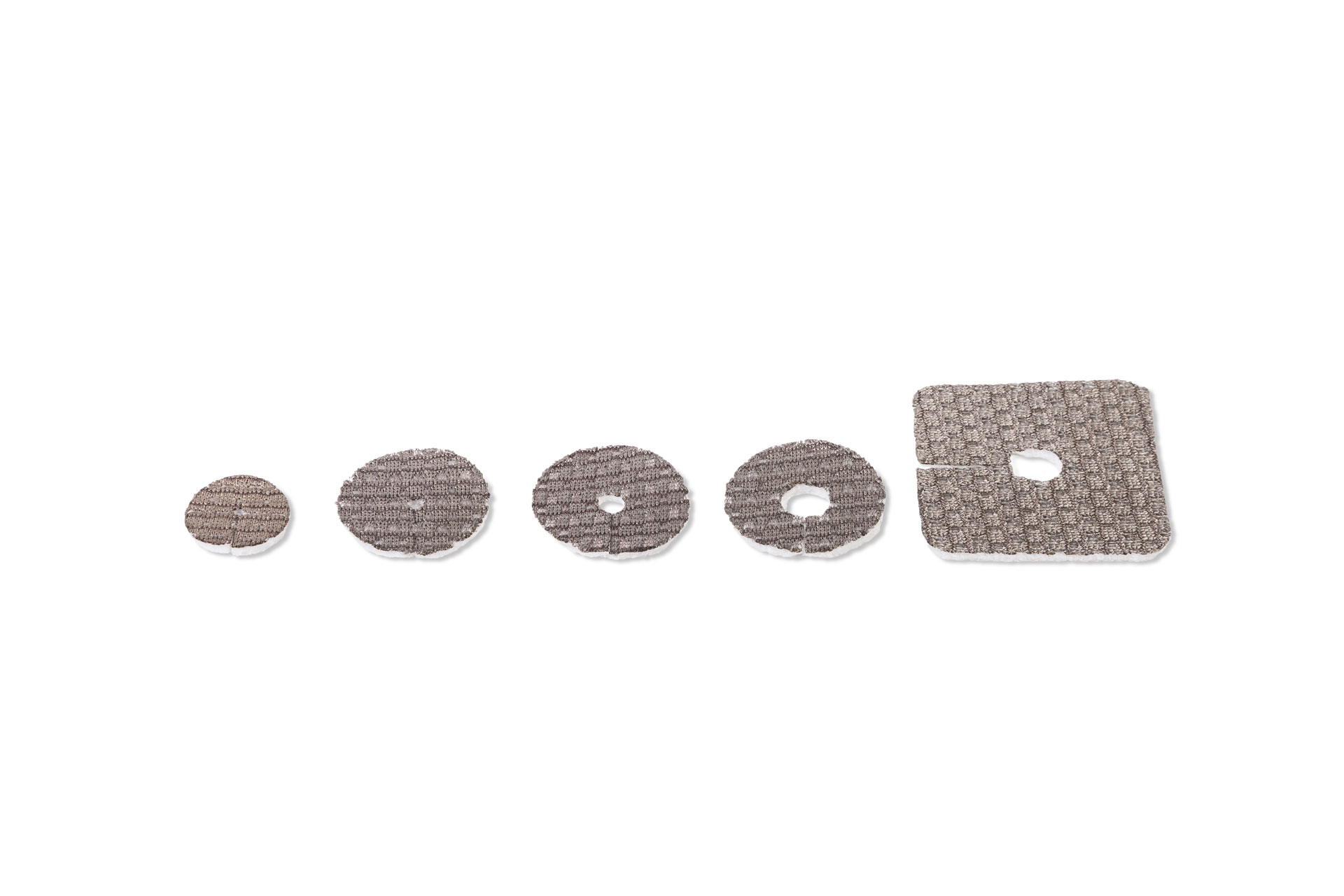
Reduced CLABSI rates maintained for six years across seven different ICUs with estimated cost savings of US$4,070 to US$39,600 per 1,000 catheter days
Geneva, Ill. (April 30, 2018) — A clinical study conducted by the University of South Florida (USF) and Tampa General Hospital has demonstrated significantly decreased central line–associated bloodstream infections (CLABSI) in adult ICU patients with the use of Silverlon® — silver-plated antimicrobial dressings for central venous catheters (CVCs) — compared to chlorhexidine gluconate-impregnated sponge (CHGIS) dressings.
Published in the Journal of Intensive Care Medicine, the study demonstrated a statistically significant decrease in the rate of CLABSI per 1,000 catheter days in the Silverlon group — from 2.38 to 1.28 (P = .001) — which represents a 46% reduction. Since the study period, Tampa General Hospital has maintained the reduced CLABSI rate for six years by implementing the use of Silverlon in seven different ICUs: medical, coronary care, neurological, burn, surgical trauma, cardiothoracic, and vascular. The study also found the reduction in CLABSI rates was associated with an estimated cost savings of US$4,070 to US$39,600 per 1,000 catheter days.
“The positive results we obtained in this study and the significant and sustained reduction in CLABSI deserve consideration for routine use of Silverlon in CVC insertion and care protocols in adult ICUs,” said Jorge Marcet, M.D., Professor of Surgery and Division Director, Colon and Rectal Surgery at the University of South Florida. “Not only did Silverlon dressings reduce CLABSI rates that are a significant cause of patient morbidity, mortality and prolonged hospital stays, but the reduction in CLABSI rates was found to be associated with significant cost savings in our institution.”
Patients admitted to intensive care units often require the placement of a CVC. The average infection rate for adult ICUs reported in 2013 by the National Healthcare Safety Network ranged from 0.8 to 2.9 per 1,000 catheter days. Patient mortality rates associated with CLABSIs range from 12% to 25% while the cost of CLABSIs per episode of care ranges from US$3,700 to US$36,000. The Centers for Disease Control and Prevention reported a 50% reduction in ICU CLABSI rates in the United States from 2008 to 2014. Currently, it is thought that most CLABSIs are preventable.
A number of clinical trials have shown the significant benefits of silver-plated dressings on surgical wounds, including a recent study conducted by the Harvard Combined Orthopaedic Residency Program. However, this study conducted by USF and Tampa General Hospital is the first of its kind to demonstrate the benefits of a silver-plated dressing as part of a bundle to help reduce the risk of CLABSI.
Study Overview & Findings
A total of 3,189 patient records were studied from seven different ICUs during a two-year period. Patients received either CHGIS dressings (Jan.-Dec. 2009) or silver dressings (Jan.-Dec. 2010). Primary outcomes measured were CLABSI rates per 1,000 catheter days and ICU length of stay.
“Silverlon has been included in numerous studies that have clearly demonstrated that silver nylon dressings can offer advantages that help to improve patient care,” said Raul Brizuela, president and CEO of Argentum Medical. “We are pleased to have the credibility of USF and Tampa General Hospital’s research that discusses the benefits of Silverlon in the protection of patients with central venous catheters.”
About Silverlon
Silverlon® wound dressings have a permanently plated metallic surface, which provides the antimicrobial benefits of silver in the dressing without staining the skin and without increasing bioburden. Silverlon was originally developed for the U.S. military, where it is still extensively used for management of burn and blast injuries. Silverlon dressings are used today by surgeons and other healthcare professionals around the world on surgical wounds, in negative pressure wound therapy, on chronic wounds, burns, skin grafts, and IV and catheter-related wounds.
Silverlon Island Wound Dressings and Silverlon Wound Pad Dressings are indicated for the management of infected wounds, as the silver in the dressing provides an antimicrobial barrier that may be helpful in managing these wounds. In addition, the moist wound healing environment and control of wound bacteria within the Silverlon Island Wound Dressing and Silverlon Wound Pad Dressing may help reduce the risk of wound infection and support the body's healing process. Silverlon Island Wound Dressings and Silverlon Wound Pad Dressing’s non-adherent wound contact layer reduces pain during dressing changes and evaporation of moisture in the dressing may soothe the wound. For more information and complete indications for use, visit http://www.silverlon.com
About Argentum Medical
Argentum Medical pioneered the use of silver-plated nylon. Specializing in the development of innovative products made from silver-plated nylon, the company continues to explore new applications and markets for its Silverlon® technology in keeping with its corporate mission to improve clinical outcomes.
###
Please note that this study may involve findings that exceed the claims currently cleared by the FDA for the product. Argentum Medical, LLC is not intending to make performance claims about its product. The intent is to disseminate the scientific literature on these products. We encourage you to read this study to understand the strengths and limitations of the data. For some claims, Argentum is seeking to broaden the indications with the FDA in the future using data, such as these studies, to provide the substantiation. This study along with other independent, peer-reviewed, published clinical studies suggest Silverlon Dressings can be an important element in wound care, and that the control of wound bacteria within the dressing may help reduce the risk of infection. A full bibliography of studies can be found at www.silverlon.com.